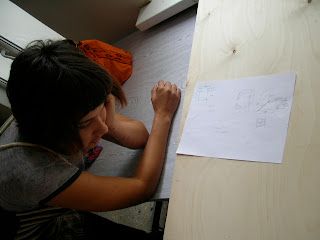Когда Самара была ещё молода, скромна и неприхотлива, но, как и полагается молодой породистой девице, недурно сложена, весьма красива и обаятельна, немало было желающих отдать ей своё сердце и связать с ней свою судьбу. Как положено от жгучей этой, всегда взаимной любви рождалось нечто новое и замечательное: будь то дома или домики, парки или скверики, улицы или, может быть, улочки, да мало ли что ещё.
В этой всеобщей суматохе и издал свой первый рубаночный писк домик Коля. А потом ещё долго рождался под звуки лобзиков, молотков, пилы, ну или что там ещё используют акушеры плотники?
Когда же он наконец родился, оказался скромным и молчаливым. Лишь открыл зеленозанавесочные глаза и больше ничего не осмелился сделать. Поэтому и имени его никто не знал, а чтобы различать с другими новорожденными присвоили номер. Так и повелось, не Коля, а номер 109.
Купец-отец жил в доме с двумя дочерьми и женой. Все они много историй рассказать успели, да и гости их заграничные до разговоров охочие были. Какие-то происшествия Коля и сам видел или нутром чувствовал.
После отца Коля сапожника вселил, потом булочника, позже швея с сыном Василием въехала, который после смерти любимой матушки в дом жену привёл и детей приплодил, и дети эти выросли в доме, своими семьями обзавелись.
А номер 109 всё молчал. Когда после Василия в нём художница Валя жила, и продавщица Елена его тоже не слышала... Таксист и его жена Юля тоже. Домик впитывал запахи, запоминал истории, не роняя ни звука много-много лет. И вот только недавно осмелел наконец, развлекает своим скрипучим басом своих ныне живущих, да так разошелся, что не останавливается ни на минуту. Сыплет историями, проявляет на стенах картины, запахи показывает, комментирует. А жильцы думают, почему пол ходуном ходит, отчего балки прогнулись, откуда пахнет это и чем, и двери неужто осели? Старый думают. Не понимают…
















































